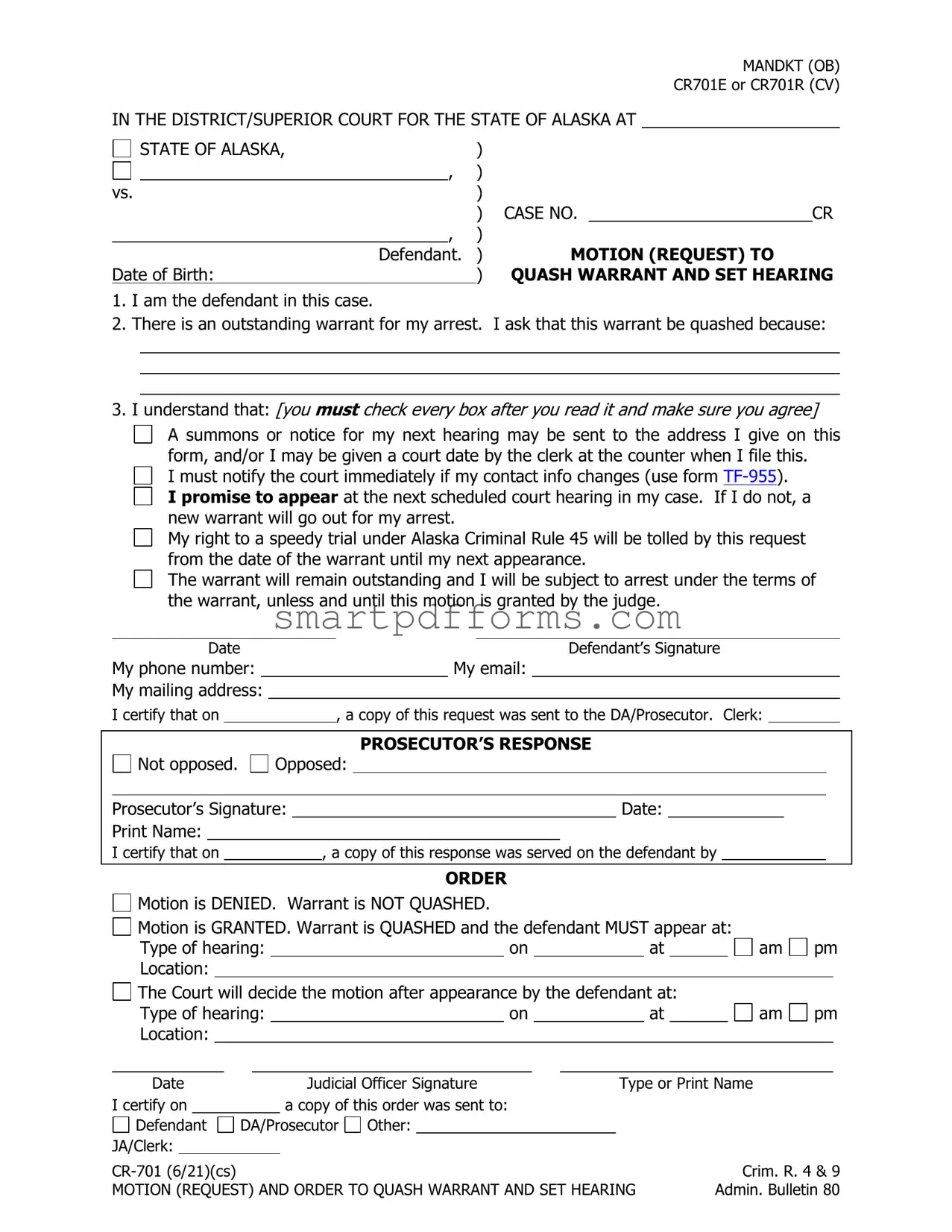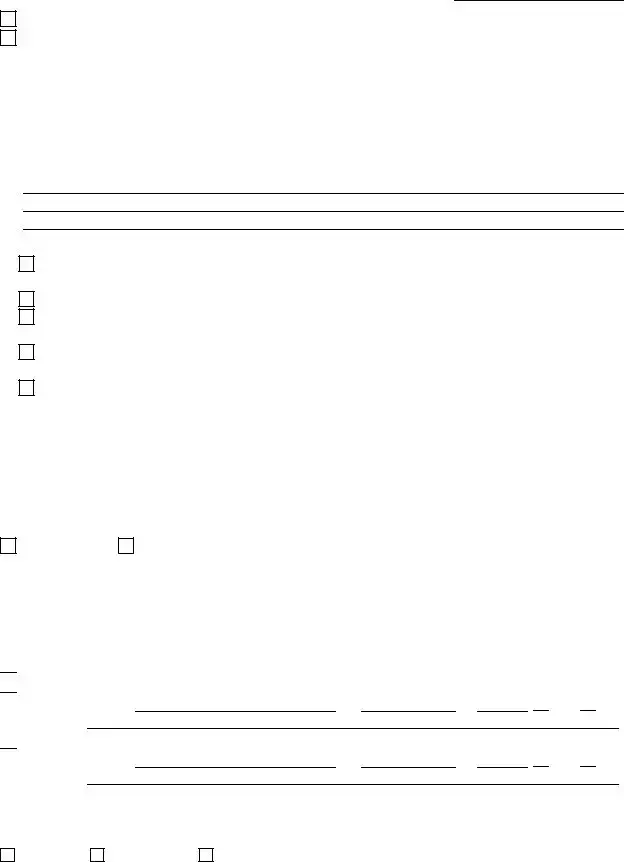When someone finds themselves with an outstanding arrest warrant, it can feel like the weight of the world is on their shoulders, but there's a lifeline available through legal channels, specifically the Quash Warrant Request form. This form, notably known as MANDKT (OB) CR701E or CR701R in the context of Alaska's legal system, is a critical tool for defendants seeking to address and resolve outstanding arrest warrants directly through the courts. At its core, the form serves as a formal request by the defendant to the court, asking for the warrant to be dismissed or "quashed," and for a hearing to be set. The process involves a series of checks and balances, starting with the defendant's acknowledgment of their current situation and their commitment to appear at future court hearings once the warrant issue is addressed. Important details such as the mandatory notification to the court of any changes in contact information, the understanding that the right to a speedy trial may be affected, and the fact that the warrant remains in effect until the motion is granted, are all critical aspects outlined in the form. Additionally, the procedural steps include the necessity for the defendant to notify the prosecutor of their request, culminating in a judicial decision that either grants or denies the motion to quash the warrant. This decision hinges on various factors, including but not limited to, the defendant's appearance at a specified hearing. Understanding the intricacies of the Quash Warrant Request can empower defendants to take proactive steps towards resolving their legal predicaments in a structured and legally recognized manner.



 Motion is DENIED. Warrant is NOT QUASHED.
Motion is DENIED. Warrant is NOT QUASHED.
 Motion is GRANTED. Warrant is QUASHED and the defendant MUST appear at:
Motion is GRANTED. Warrant is QUASHED and the defendant MUST appear at: am
am  pm Location:
pm Location:
 The Court will decide the motion after appearance by the defendant at:
The Court will decide the motion after appearance by the defendant at: am
am  pm Location:
pm Location: